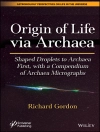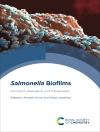Spis treści
Chair’s introduction (Michael
Welsh).
Overview of the SLC26 family and associated diseases
(Juha Kere) .
Discussion.
Individual characteristics of members of the SL...
Spis treści
Chair’s introduction (Michael
Welsh).
Overview of the SLC26 family and associated diseases
(Juha Kere) .
Discussion.
Individual characteristics of members of the SLC26 family in
Vertebrates and their homologues in insects (Marlies
Knipper, Thomas Weber, Harald Winter, Claudia Braig, Jelka
Cimerman, Juergen T. Fraenzer and Ulrike
Zimmermann).
Discussion.
Sulfate transport by SLC26 transporters (Daniel
Markovich).
Sugar transport by members of the SLC26 superfamily
(Jonathan Ashmore and Jean-Marie
Chambard).
Discussion.
Discussion.
SLC26A3 and congenital chloride diarrhoea (Pia
Höglund).
Discussion.
Expression, regulation and the role of SLC26 Cl-/HCO3-
exchangers in kidney and gastrointestinal tract (Manoocher
Soleimani).
Discussion.
Anion exchangers in flux: functional differences between
human and mouse SLC26A6 polypeptides (Seth L. Alper, Andrew
K. Stewart, Marina N. Chernova, Alexander S. Zolotarev, Jeffrey S.
Clark and David H. Vandorpe).
Discussion.
Physiology of electrogenic SLC26 paralogues (Michael
F. Romero, Min-Hwang Chang, Consuelo Plata, Kambiz Zandi-Nejad,
Vadjista Broumand, Caroline R. Sussman and David B.
Mount).
Discussion.
Role of SLC26-mediated Cl-/base exchange in proximal tubule
na Cl transport (Peter S. Aronson).
Discussion.
SLC26 transporters and the inhibitory control of pancreatic
ductal bicarbonate secretion (Péter Hegyi, Zoltán
Rakonczay Jr., László Tiszlavica, András
Varró, András Tóth, Gábor Rácz, Gábor
Varga, Michael A. Gray and Barry E. Argent).
Discussion.
Regulatory interaction between CFt R and the SLC26
transporters (Nikolay Shcheynikov, Shigeru B. H. Ko,
Weizhong Zeng, Joo Young Choi, Michael R. Dorwart, Philip J. Thomas
and Shmuel Muallem).
Discussion.
Insights from a transgenic mouse model on the role of SLC26A2
in health and disease.
Discussion.
Lorraine A. Everett new insights into the role of pendrin
(SLC26A4) in inner ear fluid homeostasis (Antonella Forlino,
Benedetta Gualeni, Fabio Pecora, Sara Della Torre, Rocco Piazza,
Cecilia Tiveron, Laura Tatangelo, Andrea Superti-Furga, Giuseppe
Cetta and Antonio Rossi).
Discussion.
the renal physiology of pendrin (SLC26A4) and its role in
hypertension (Susan M. Wall).
Discussion.
Interaction of prestin (SLC26A5) with monovalent
intracellular anions (Dominik Oliver, Thorsten
Schächinger and Bernd Fakler).
Discussion.
Final Discussion.
Index of contributors.
Subject index.












